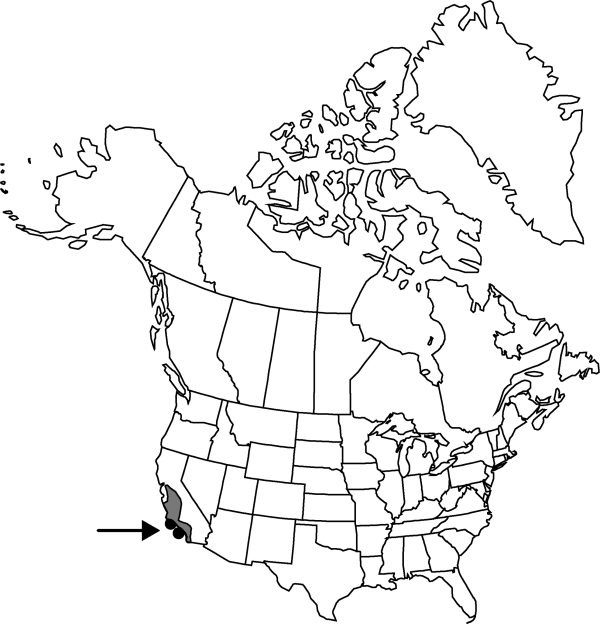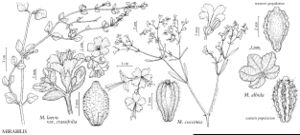Difference between revisions of "Mirabilis laevis var. crassifolia"
Sida 19: 549. 2001.
FNA>Volume Importer |
imported>Volume Importer |
||
| (One intermediate revision by the same user not shown) | |||
| Line 6: | Line 6: | ||
|place=19: 549. 2001 | |place=19: 549. 2001 | ||
|year=2001 | |year=2001 | ||
| + | }} | ||
| + | |special_status={{Treatment/ID/Special_status | ||
| + | |code=F | ||
| + | |label=Illustrated | ||
}} | }} | ||
|basionyms={{Treatment/ID/Basionym | |basionyms={{Treatment/ID/Basionym | ||
| Line 87: | Line 91: | ||
|publication title=Sida | |publication title=Sida | ||
|publication year=2001 | |publication year=2001 | ||
| − | |special status= | + | |special status=Illustrated |
| − | |source xml=https:// | + | |source xml=https://bitbucket.org/aafc-mbb/fna-data-curation/src/2e0870ddd59836b60bcf96646a41e87ea5a5943a/coarse_grained_fna_xml/V4/V4_91.xml |
|genus=Mirabilis | |genus=Mirabilis | ||
|section=Mirabilis sect. Oxybaphoides | |section=Mirabilis sect. Oxybaphoides | ||
Latest revision as of 22:01, 5 November 2020
Stems few to many in clumps, often glabrous basally, viscid-pubescent or ± scabrous distally. Leaf blades 1–4.5 × 0.4–3.5 cm. Inflorescences ± thyrselike, often narrow; involucres in clusters on short branches along main axis after first few dichotomous branches, 5–9 mm; bracts 30–70% connate, lobes ovate or ovate-oblong, base often 50–70% of height, apex obtuse or acute. Flowers: perianth usually pink, lavender, or magenta, rarely white. Fruits dark to pale gray-brown and mottled with dark gray-brown, tan, or red-brown, sometimes also faintly and irregularly pale striped, ovoid, 3–5 × 2.7–3.7 mm.
Phenology: Flowering ± year-round, most vigorously in spring.
Habitat: Brush or open woodlands, banks, bluffs, open hillsides, washes
Elevation: 0-1800 m
Distribution

Calif., Mexico (Baja California, Baja California Sur).
Discussion
In recent floras Mirabilis laevis var. crassifolia has been treated as M. californica or M. laevis. The California specimen of M. tenuiloba var. polyphylla (Standley) J. F. Macbride cited by Macbride (1918) [M. polyphylla (Standley) Standley] is considered to be M. laevis var. crassifolia. It has fruiting involucres at the upper range of its length, similar to some plants from the Channel Islands. In Baja California, indigenous peoples have used the plants of var. crassifolia to alleviate stomach ailments.
Selected References
None.
